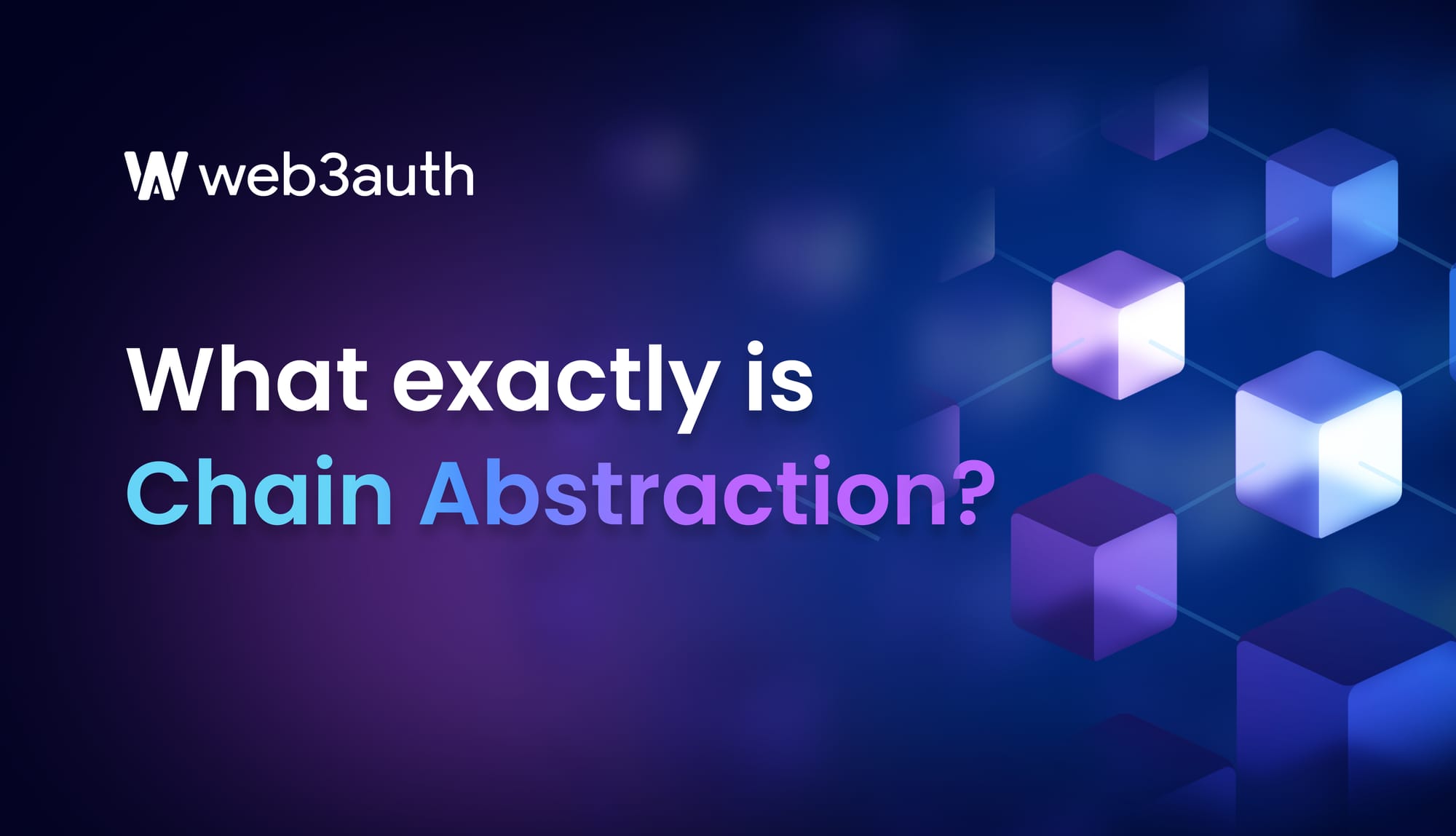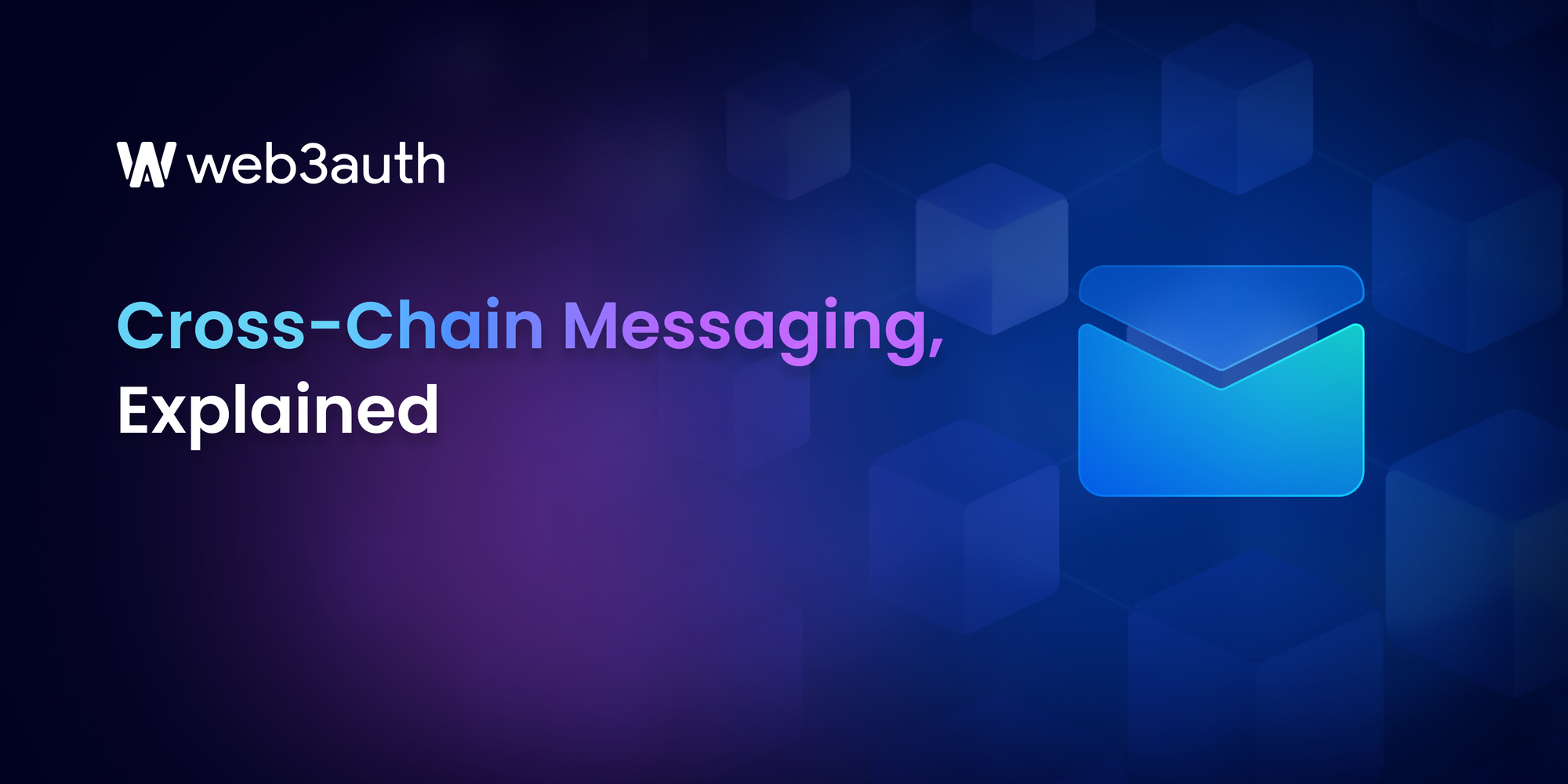On this page
Picture a bustling new city that’s still under construction – ambitious plans, with towering skyscrapers, green spaces, and innovative infrastructure that promise a bright future. Now imagine you had to apply for special entry passes to access every single building – the allure of the glistening towers seem to have dulled considerably.
Just like this new city, Web3 is full of potential and excitement, drawing in new "citizens" (users and developers) who see the promise of decentralization, privacy, and control over their digital lives. While several critical challenges still hinder its widespread adoption, emerging solutions such as chain abstraction, are paving the way for a more unified and accessible Web3 ecosystem.
Challenges in Web3 Today
Scalability and Performance Issues: Blockchain scalability remains a core issue, with networks like Ethereum often struggling with high transaction costs and slow speeds, especially during peak periods. While Layer 2 solutions like Optimistic Rollups and zk-Rollups are helping improve blockchain performance, the need for scalable infrastructure continues to grow as Web3 adoption increases.
User Experience (UX) and Accessibility: For many newcomers, Web3 remains difficult to navigate – according to recent statistics, nearly 50% of potential Web3 users disengage when asked to use a crypto wallet, highlighting a steep learning curve for newcomers unfamiliar with blockchain technology. Concepts like private keys, multi-chain Web3 wallets, and decentralized identity can be confusing, while managing transactions across different networks complicates the user journey. Enhancing the Web3 user experience is essential to attract a broader audience and make decentralized applications more accessible.
Security Concerns: Security remains a significant barrier to trust in Web3 – a total of $688,102,941 was lost across 184 on-chain security incidents in just Q2 2024. Issues such as smart contract vulnerabilities, blockchain security risks, and phishing attacks highlight the importance of robust security protocols and privacy-enhancing technologies like zero-knowledge proofs.
Additionally, cross-chain bridges are frequent targets of hackers, with nearly $800 million in losses across multiple chains in 2023, underscoring the need for secure interoperability solutions.
Fragmentation: Fragmentation in Web3 refers to the disjointed and isolated nature of various blockchain ecosystems, which can limit interoperability, user experience, and the efficient transfer of assets and data. Here are the main types of fragmentation within Web3:
- Blockchain Ecosystem Fragmentation
The blockchain ecosystem is highly fragmented, with Solana capturing around 49.3% of global investor interest in chain-specific narratives, followed by Ethereum at 12.73% and Binance Smart Chain at 5.4%. Each of these blockchains has their unique protocols, tokens, and consensus mechanisms with more chains emerging
Liquidity is dispersed across different blockchains, reducing the overall liquidity available for trading and DeFi activities on any single network. DeFi protocols often lack deep liquidity pools because assets are scattered across multiple chains – as of 2024, Ethereum holds around $43 billion in TVL, significantly higher than Solana's approximately $2 billion, and more than 20 times Avalanche's liquidity.
This fragmentation can lead to increased price slippage, higher transaction fees, and inefficiencies in capital allocation. For example, during high-volatility periods in 2023 and 2024, price slippage on Ethereum ranged from 0.1% to 1% on large trades, while on smaller chains like Solana and Avalanche, slippage exceeded 5% for similarly sized trades.
- Development Fragmentation
Developers face challenges when building dApps due to varying programming languages, tools, and standards across blockchains. For example, Solidity remains the primary language for Ethereum, while other chains like Solana prefer Rust, and Binance Smart Chain supports both Solidity and its own standards.
This diversity necessitates maintaining multiple codebases, which can be both time-consuming and resource-intensive and limits the potential audience for their dApps, as they might only be accessible on select chains.
- Governance Fragmentation
Governance models vary greatly between blockchains, resulting in inconsistent rules, voting mechanisms, and community standards. This can complicate collaboration and decision-making for cross-chain initiatives, as different blockchains may have contrasting governance priorities and structures.
For example, DAOs on Ethereum are well-known for their decentralized, community-driven governance mechanisms, where members vote on proposals, and decisions are executed based on majority consensus. In contrast, Binance Smart Chain (BSC), with its more centralized structure, may impose greater control, aligning decisions with Binance's interests or centralized validators.
The Role of Chain Abstraction in Web3
One solution to these issues is chain abstraction, which addresses many of the Web3 challenges by simplifying interactions across different blockchain ecosystems. Chain abstraction enables users and developers to interact with decentralized applications (dApps) without needing to manage the complexities of underlying chains directly. Here’s how chain abstraction tackles some of Web3’s core challenges:
Improving Interoperability: Chain abstraction significantly reduces fragmentation by enabling dApps to operate seamlessly across multiple blockchains. Users no longer need to switch networks or handle separate assets for each chain, thus enhancing cross-chain interoperability and providing a smoother, more cohesive Web3 user experience.
Enhancing User Experience: Just as most people don’t need to understand internet protocols to browse the web or send emails, users of Web3 shouldn't have to worry about which blockchain they are interacting with to use dApps. By abstracting the complexities involved in blockchain transactions, chain abstraction makes Web3 more accessible to non-technical users. It eliminates the need for users to understand gas fees, manage multiple wallets, or switch networks, lowering the barrier to entry for new users and making Web3 adoption more feasible for mainstream audiences.
Boosting Security and Resilience: Chain abstraction can also improve blockchain security by allowing for multi-chain security protocols and redundancies. This reduces the risks associated with vulnerabilities on a single chain, enabling Web3 applications to distribute activity across multiple networks for enhanced resilience.
Optimizing Scalability: With chain abstraction, dApps can route transactions to less congested networks, optimizing Web3 scalability and reducing transaction costs. This flexibility allows applications to maximize performance without being constrained by a single blockchain’s limitations.
Other Emerging Solutions Enhancing Web3
In addition to chain abstraction, several other technologies are helping address the top Web3 challenges:
Layer 2 Scaling Solutions: Rollups like Optimistic Rollups and zk-Rollups are essential for addressing Web3 scalability issues, enabling faster and more cost-effective transactions.
Cross-Chain Bridges and Interoperability Protocols: Protocols like Cosmos, Polkadot, and Chainlink’s Cross-Chain Interoperability Protocol (CCIP) are helping create a more connected blockchain ecosystem by enabling secure and seamless asset transfers.
Modular Blockchain Architectures: Modular blockchains allow for greater flexibility and customization, supporting Web3 adoption by enabling developers to build specialized chains that integrate easily with the broader network.
The Defragmentation of Web3
Overcoming the fragmentation and Web3 challenges that have historically limited the decentralized web’s growth is no easy feat. As chain abstraction and other emerging solutions gain traction, they will play an essential role in transforming Web3 into a more unified, user-friendly, and accessible ecosystem. This technology is key to enabling the decentralized web to fulfill its potential – sort of like an all-access pass to all the great views of the city.









